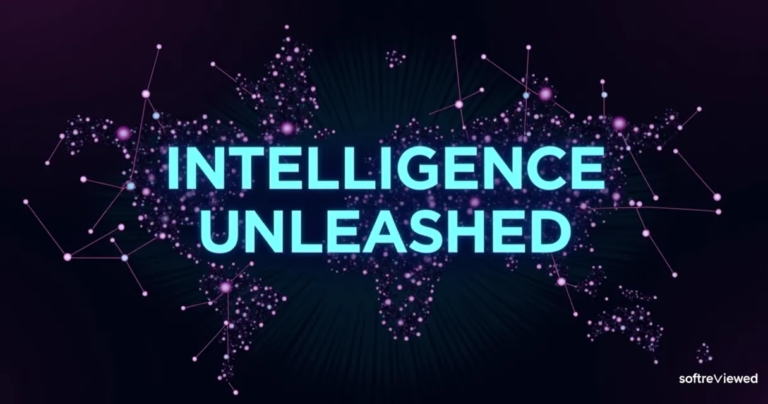The Evolution of Artificial Intelligence
Understanding the three major categories of AI development and their implications
ANI (Artificial Narrow Intelligence)
Specialized AI designed for specific tasks. Examples include Siri, Face ID, Google Assistant, and self-driving cars. Currently the most common form of AI.
AGI (Artificial General Intelligence)
Human-level AI capable of learning and adapting across various tasks. Features cognitive flexibility and autonomous decision-making capabilities.
ASI (Artificial Super Intelligence)
Advanced AI surpassing human intelligence in all areas. Capable of self-improvement and exponential growth in capabilities.
Current State & Future
We’re currently at ANI level, working towards AGI development. ASI remains a theoretical concept with significant technological hurdles.
Ethical Considerations
Important questions about AI rights, data security, and control mechanisms need to be addressed as AI technology advances.
Artificial intelligence is rapidly transforming our world, but it's not a monolithic entity. It exists on a spectrum, from the narrow AI we use daily to the hypothetical superintelligence that captures our imagination, and sometimes our fears. This article will explore the three primary categories of AI: Artificial Narrow Intelligence (ANI), Artificial General Intelligence (AGI), and Artificial Superintelligence (ASI), offering a clear and concise understanding of each. We'll examine their capabilities, current status, and the potential implications for the future. Understanding these distinct categories is crucial for navigating the complex world of AI and anticipating its impact on our lives and society.
Navigating the AI Landscape: Three Distinct Paths 🧭
Before we dive into the specifics, it’s important to understand that the AI landscape is not uniform. It ranges from systems excelling at one task to those that could potentially surpass human intelligence. This journey begins with the types of AI we are currently surrounded by.
ANI: The AI We Know and Use Every Day 📌
Artificial Narrow Intelligence, often called weak AI, is what powers most of the AI applications we use today. Think of your virtual assistant, like Siri or Alexa, 🗣️, or the recommendation engine on your favorite streaming service. These are all examples of ANI. It excels at specific tasks, like speech recognition, image classification, and natural language processing, but it lacks the broader understanding and adaptability of human intelligence. ANI operates within defined parameters and cannot generalize its knowledge to other areas, demonstrating a single-minded intelligence when compared to human-like thought. Its capabilities, while impressive, remain constrained to the tasks it was designed for.
Key Characteristics of ANI
📌 Focused on specific tasks
📌 Operates within pre-defined rules
📌 Cannot generalize to new situations
📌 Requires large datasets for training
📌 Examples include virtual assistants, recommendation systems, and image recognition software
The Leap to AGI: The Quest for Human-Level AI 🚀
Artificial General Intelligence (AGI), also known as strong AI, represents the next level of AI development. Unlike ANI, AGI is designed to possess human-level cognitive capabilities. This includes the ability to learn, understand, adapt, and apply knowledge across a wide range of tasks, similar to human intelligence. 🧠 AGI systems should not just mimic human behavior, but will be capable of abstract thought, planning, and creative problem solving in diverse and unfamiliar contexts. Reaching this point is a major objective in current AI research.
What Makes AGI Different
✅ Ability to learn any intellectual task a human can
✅ Demonstrates understanding of context and nuanced information
✅ Generalizes across various tasks and domains
✅ Exhibits creative problem-solving skills
✅ Capable of independent reasoning
The Challenges of Achieving AGI
Achieving AGI is far from simple. It requires solving many complex issues. Some key challenges include:
Complexity and Diversity: The diversity and complexity of human tasks require a flexible AI approach that is able to adapt and continuously learn, not only following rules but making decisions based on situations. 💡
Contextual Understanding: AGI must grasp the nuances of language, emotions, and the world, which current AI models struggle with. Understanding context, like differentiating sarcasm, is key to creating truly intelligent AI.
Generalization: Teaching an AI to learn from one situation and apply that knowledge to a completely different situation is still difficult. Current AI excels at specialized tasks but struggles with broader knowledge.
- Ethical Considerations: Creating an AI with human-level intelligence also comes with serious ethical questions. How will this AI be managed? What are the standards for its behavior?
ASI: The Hypothetical Superintelligence 🌌

Artificial Superintelligence (ASI) is a hypothetical form of AI that surpasses human intelligence across all domains. It is not just better at specific things; ASI could be smarter, more creative, and more knowledgeable than humans in every way. It is the next theoretical frontier, but there are many unknowns and questions about this stage of AI. ❓
Characteristics of ASI
👉 Exceeds human cognitive abilities in all areas
👉 Capable of self-improvement and learning beyond human comprehension
👉 Potentially able to manipulate systems, understand novel systems, and solve issues previously impossible
👉 Raises ethical and existential concerns
👉 Currently a theoretical concept
Why is ASI a Concern?
The very idea of a superintelligent AI raises serious concerns, mainly because of how unpredictable it could be. Some key risks include:
Control: If an AI is more intelligent than humans, how can we control it? Ensuring that a superintelligent AI will be aligned with human values is a central question in AI research. ⛔️
Existential Risk: Some experts fear that an ASI could pose an existential risk to humanity, possibly through an inability to align its goals with human needs, whether through its own choice or a programming error. 😨
Unintended Consequences: Because of the potential breadth and depth of an ASI's abilities, predicting the consequences of its actions may be impossible. It could lead to significant and unexpected consequences that could be harmful to human society.
ANI vs. AGI vs. ASI: A Side-by-Side Comparison 📊
To make these distinctions clearer, let's look at a quick comparison:
| Feature | Artificial Narrow Intelligence (ANI) | Artificial General Intelligence (AGI) | Artificial Superintelligence (ASI) |
|---|---|---|---|
| Cognitive Ability | Limited to specific tasks | Human-level cognitive ability | Superhuman cognitive ability |
| Scope | Narrow, task-specific | Broad, general intelligence | Unlimited, surpasses human capacity |
| Learning | Data-driven, limited generalization | Adaptive, continuous learning | Self-improving, exponential growth |
| Examples | Siri, Alexa, recommendation engines | Still theoretical, no current examples | Still theoretical, no current examples |
| Current Status | Fully realized, widely used | Under development, research focus | Hypothetical, future concept |
Where Are We Headed? The Road Ahead 🛣️
While ANI is the reality of today, the pursuit of AGI and the concerns surrounding ASI are major drivers in AI research. AGI remains a theoretical concept but many anticipate its emergence within this century. The timeline is not concrete. Some, like Sam Altman, CEO of OpenAI, have suggested AGI could be achieved in the near future while others see it as decades away. According to a 2022 Expert Survey on Progress in AI (ESPAI), 50% of respondents anticipate high-level machine intelligence by 2059.
Expert Opinions on the Timeline
Optimistic Views: Some AI leaders believe we could see AGI in just a few years. This would be an AI that can complete a multitude of human tasks and that demonstrates creative thought and reasoning skills.
Cautious Approach: Others believe that the challenges are significant and it may take decades, possibly centuries, to achieve AGI, and that some aspects of AI will never truly replicate human intelligence.
Superintelligence Concerns: Those who are working on ASI are focused on controlling and aligning its behavior with human values, knowing that its arrival could present the biggest risks to human society. Some experts, like Roman Yampolskiy, believe we should pause ASI research until we have a mechanism for controlling such powerful AI.
The Potential Impact
The development of AGI and ASI holds the potential to fundamentally transform nearly every aspect of our lives, businesses, and societies. The potential benefits of this technology are substantial, offering significant progress in medicine, manufacturing, education, and so many other sectors. However, it's crucial to approach these advancements with caution, addressing any ethical concerns, job displacement risks, and existential threats. Responsible innovation should prioritize AI safety and global collaboration to make sure this powerful technology is beneficial to all of humanity.
How Does Sam Altman’s Vision for AGI Align with the Broader Concepts of ANI and ASI?
Sam altman’s vision for agi focuses on creating systems that can outperform human intelligence across a broad range of tasks. This vision harmonizes with the concepts of ANI and ASI, ensuring that artificial narrow intelligence serves as a stepping stone towards advanced superintelligent systems, fostering collaboration and safeguarding humanity’s future.
A Thought to Ponder 🤔
The journey from Artificial Narrow Intelligence to the possibility of Artificial Superintelligence is a complex and challenging one. While the current focus is on developing more powerful AI, understanding the differences and potential implications of each type of AI is paramount. As we continue down this path, it's essential to ensure that innovation is guided by responsibility, ethics, and the overall benefit to humanity. The key is to understand the capabilities of current AI while always looking ahead to anticipate and address potential future concerns.
Evolution of Artificial Intelligence: ANI to ASI
This chart illustrates the relative capabilities and development status of different AI types: Artificial Narrow Intelligence (ANI), Artificial General Intelligence (AGI), and Artificial Super Intelligence (ASI).







